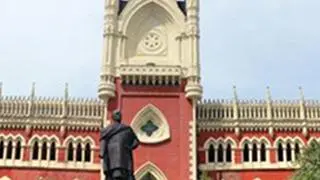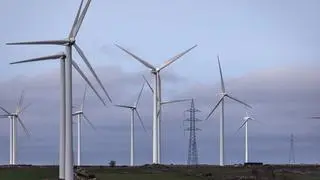There is an urgent need shorten acquisition process to reduce military systems’ induction time from the current, almost seven years, said Bharat Forge Limited CMD Baba Kalyani. Acquiring time through emergency procurement is less than normal but big platform acquisition cannot be routed via this channel, he told businessline in an exclusive interview at his Bharat Forge office in Pune where he also talked about his company’s encouraging business opportunities; expanding portfolio to cover naval platforms, missiles and drones; global footprints; and investments in R&D. Excerpts:
Reforms to bring Aatmanirbharta in the defence sector seems to have paid off for the indigenous industry. What do you think India should be doing to fix still complicated acquisition processes to unleash next level of defence reform 2.0?
I think the defence reform 2.0 was pretty much in the works while the CDS (Chief of Defence Staff, referring to General Bipin Rawat) was appointed and that was one of the objectives given to him in terms of how to speed up the acquisition process. Today, if you look at the acquisition process, in Army average acquisition takes about seven years. In Navy, its little faster because Navy has its own design bureau and therefore has a better understanding of technology and capability. Plus they have large production units in terms of shipyards. In the Air Force, acquisition process is also very long, pretty close to seven years. Now, in today’s world in seven years the technology is very different. We are in 2023 and seven years later we would be in 2030. The technology in 2030 would be way different than what it is today. And this has been partially replaced by the whole process of emergency procurement (EP) which is ok for small value items.
About 70 per cent of your defence business is from exports. Can you let the readers know where these exports are going and if Bharat Forge is in talks or at advance stage of clinching any fresh export deal?
It should be other way round (smiles). It’s amazing for us. we have more markets open for us in the exports. We, as an organisation, aren’t equipped as defence export organisation. We should have offices in those countries, connected, networked. All those kinds of thing. I can’t tell you about countries. One thing in defence is that you cannot disclose.
Certain deals are already out in public domain?
I can’t disclose since our contract strictly prohibit us from disclosing what we are selling and to whom we are selling.
Do you see growth in exports in FY23?
Oh yes, sure. No idea about percentage. We are working with at least 10-12 countries, some of them are in South-East Asia, some of the are in Africa, some of them are in Europe. Actually, we are also working with the US.
Can you tell us how defence share of Bharat Forge will pan out in next few years? How much do you see defence business accounting for in overall revenue mix of the company in the next two years?
First of all I would think, if you look at our defence, there are four major verticals. It’s not just one vertical. One vertical is artillery, second vertical is our armoured vehicles or protected vehicles, third vertical is ammunitions (without explosives and just casing), and naval. And one vertical is missiles, we want to become a missile house, that’s for sure.
Your defence order backlog is between ₹2,200 crore and ₹2,300 crore. How much of this will be executed in this FY?
It has now gone to ₹3,200 crore. The problem is that we just got orders recently. We have to execute them in next two years. In two years, we have to get more orders of that size.
So, how much of that is in pipeline? Is it possible for you to quantify?
Difficult to give figures... there is this contract for advanced towed artillery gun systems (ATAGs) which if for ₹3,000 crore. Mounted guns are also of similar value.. ATAGs at least trials and everything is over but mounted guns, if you take current procurement cycle, it will take seven years. We are working on FICV (Futuristic Infantry Combat Vehicle), it’s ₹50,000-crore programme.. then are FRCV that are main battle tanks. We have tremendous capability in all this. But, FICV alone will take 7-8 years.
Are you ready for global competition?
When we look at GSQR (General Staff Qualitative Requirements) or PSQR ( Preliminary Staff Qualitative Requirement) of these products, Indian Army has one specification we have to qualify.., but we are putting more than that to qualify for NATO forces, for the American forces.. We seriously will start bidding for international programmes. We never bid for international programmes. ...That’s another reform we are pushing for government of India that they need to sign agreements with NATO, with the US, to include India as a supplier, for defence equipment. NATO treaty is called SOSA (Safety of Strategic Arrangement) supply and second is DEFARS (Defence Federal Acquisition Regulation Supplement). Both are related to sourcing. Moment we get DEFAC we will be eligible to supply for US soldiers. That will happen all by itself. We have to replace the existing suppliers.
That brings us to the larger issue, defence industry is largely manufacturing driven. For innovations, we are dependent on DRDO. Is there a case that industry does not have money for R&D?
If you look at our case, Bharat Forge. Just look at artillery. We have developed 8 artillery platforms. Only one out of 8 is a DRDO platform and in that half the technology is ours... And seven other platforms are developed by us hundred percent. We have tremendous investment in research..it’s going on since 2011. For 12 years, we have struggled trying to make artillery guns and it’s not that easy to make artillery guns.
Take us through your new marine systems initiatives?
We are not building ports. We are not building submarines. We are not into the big stuff. There are two or three things left in the marine which are currently all imported where we have opportunity, and where we have some let’s say knowledge or capability. One is turbines that are used in ships.
The turbines are normally one-and-half megawatts to 5-6 MW. Currently, we are in the process of developing these gas turbines. Second is the propulsion and shafting. The shaft delivers main power from the engine to the propeller at the back. The third is torpedoes. Most of the ships have old torpedoes which don’t have adequate system of homing targets. We are developing all that. The other opportunity is the gun on the naval ships. So, there is 76 mm gun, 36 mm gun, and 127 mm gun but those are limited. 127 mm gun, I think the total number required is 13 because it is one per ship. But, we are developing it.. It’s niche market..
We never bid for international programmes. ...That’s another reform we are pushing for government of India that they need to sign agreements with NATO, with the US, to include India as a supplier, for defence equipment.







Comments
Comments have to be in English, and in full sentences. They cannot be abusive or personal. Please abide by our community guidelines for posting your comments.
We have migrated to a new commenting platform. If you are already a registered user of TheHindu Businessline and logged in, you may continue to engage with our articles. If you do not have an account please register and login to post comments. Users can access their older comments by logging into their accounts on Vuukle.